

Photo Credit: yoshihiro UMEMURA
Shikoku, The world's smallest island
inhabited by black bears
Save The Island Bears
from the extinction!
You can donate by credit card.
Sorry but supporter gift is only for resident in Japan.
To save the black bears of Shikoku is
to save the richness of nature.
Recently, black bears have been in the news a lot for their appearances. In fact, their numbers are declining around the world. In Shikoku, Japan, there are only 20 bears left. This is the smallest island in the world where the black bear lives. If the situation continues at this rate, there is a 60% risk that the Shikoku black bear will become extinct by 2040, according to data. If the black bears, the umbrella species at the top of the ecosystem, disappear, it will be difficult to preserve the forests where a wide variety of living things can thrive. Now is the time for continued scientific research on Shikoku's black bears and for raising awareness in the region.
Recently, black bears have been in the news a lot for their appearances. In fact, their numbers are declining around the world. In Shikoku, Japan, there are only 20 bears left. This is the smallest island in the world where the black bear lives. If the situation continues at this rate, there is a 60% risk that the Shikoku black bear will become extinct by 2040, according to data. If the black bears, the umbrella species at the top of the ecosystem, disappear, it will be difficult to preserve the forests where a wide variety of living things can thrive. Now is the time for continued scientific research on Shikoku's black bears and for raising awareness in the region.
Where do they live?
The number of black bears in Shikoku is small, and they live only quietly in and around Mount Tsurugi in Tokushima Prefecture. Until around 1980, it was also found in western Shikoku around the border of Kochi and Ehime prefectures.
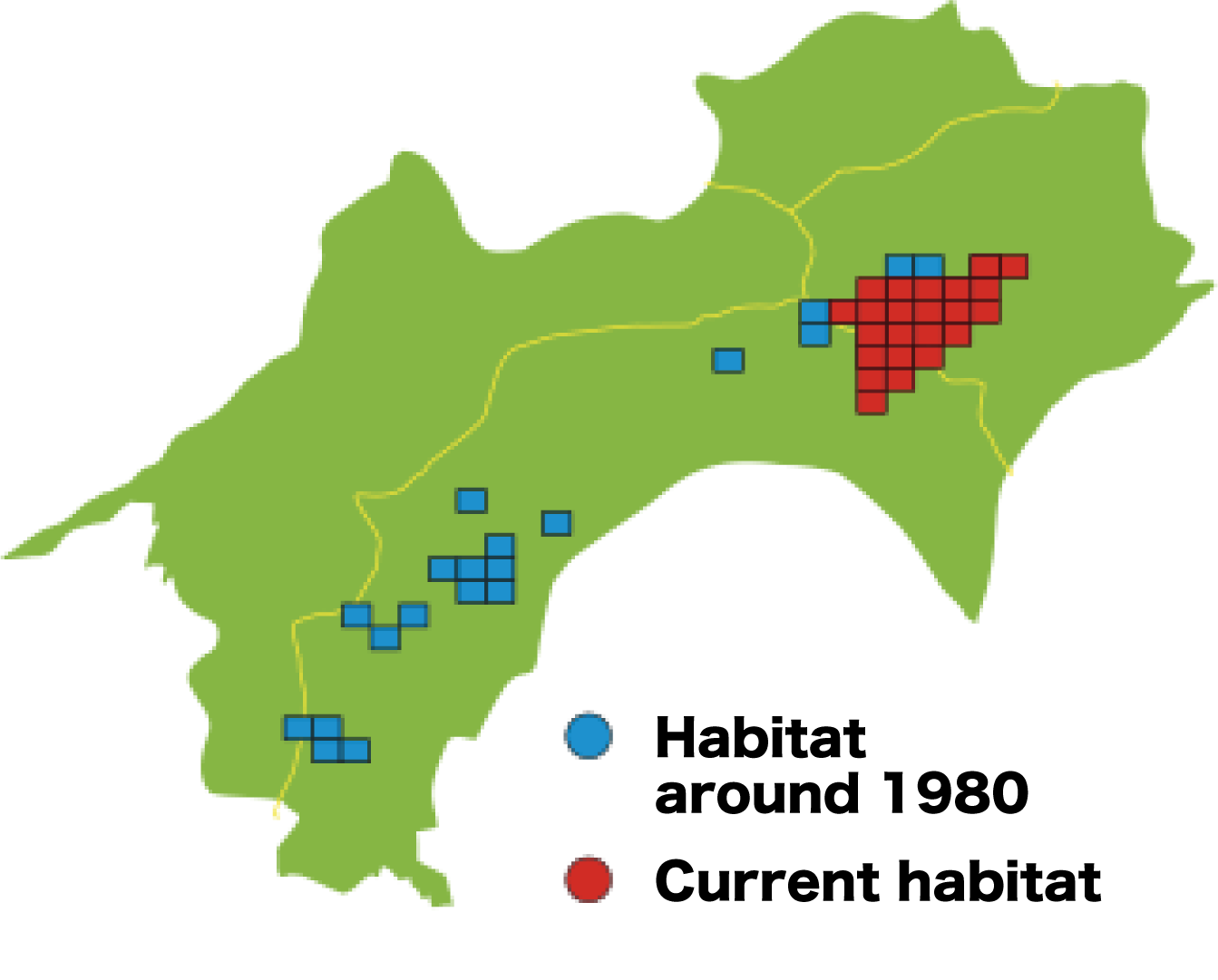
What will happen
to the forest when
the black bears are gone?
Bears are at the top of the ecosystem, called "umbrella species". Bears love acorns and other nuts, and their droppings carry plant seeds to distant forests. Protecting bears is also protecting the ecosystem richness in forests.

What kind of research
are you doing?
Researchers set up cameras traps and hair traps to collect body hair in the forests inhabited by black bears. By analyzing the video footage and DNA analysis of the attached body hair, we are able to continuously monitor the population and accurately estimate the number of individuals and their distribution areas. We also conduct research by capturing bears for research purposes, and by tracking their behavior with tracking devices, we can get a more accurate picture of the bears that live deep in the mountains. By correctly understanding the current status of black bears, we can efficiently implement measures to protect them.

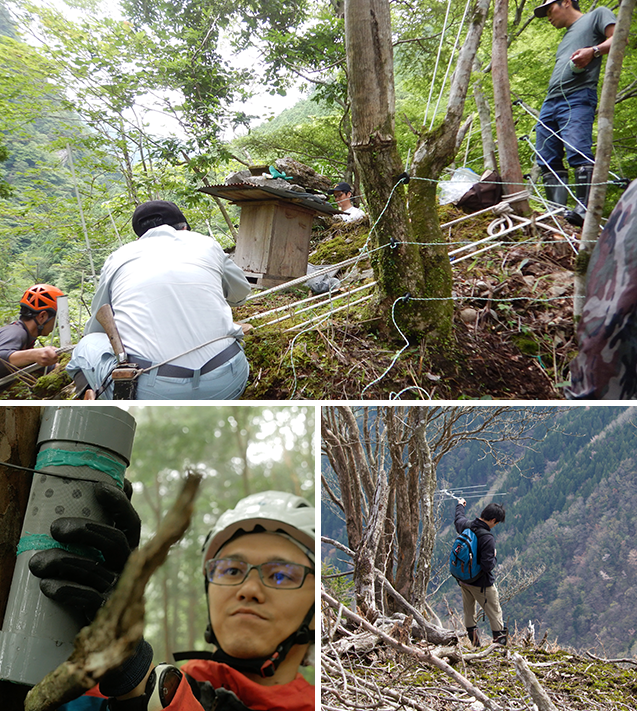
Introduction to the bears
that have now been confirmed
The researchers identified each individual by its body hair, blood DNA analysis, and the "moon ring" pattern on its chest, and gave each a nickname.
-
 Sakura...estimated 4 years old. Female. She moved to a mountain massif on the north side of Mount Tsurugi, where bears had not been seen for a long time, and has been seen there for two consecutive years. She is a promising young bear that will help restore the distribution of the population in Shikoku.
Sakura...estimated 4 years old. Female. She moved to a mountain massif on the north side of Mount Tsurugi, where bears had not been seen for a long time, and has been seen there for two consecutive years. She is a promising young bear that will help restore the distribution of the population in Shikoku.
-
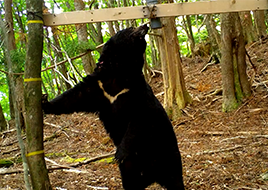 Gonta...estimated to be 24 years old. Male. He is the oldest individual confirmed in Shikoku. Also, from blood relationship analysis, it is known that he is the father of many individuals. He is a "Big Daddy" of sorts.
Gonta...estimated to be 24 years old. Male. He is the oldest individual confirmed in Shikoku. Also, from blood relationship analysis, it is known that he is the father of many individuals. He is a "Big Daddy" of sorts.
-
 Mizuki... estimated to be 21-22 years old. Female. The oldest female confirmed in Shikoku. She is characterized by her large tsukinowa. It is known that she had a child with Gonta in the past.
Mizuki... estimated to be 21-22 years old. Female. The oldest female confirmed in Shikoku. She is characterized by her large tsukinowa. It is known that she had a child with Gonta in the past.
-
Sakura Estimated 4 years old. Female. She moved to a mountain massif on the north side of Mount Tsurugi, where bears had not been seen for a long time, and has been seen there for two consecutive years. She is a promising young bear that will help restore the distribution of the population in Shikoku.
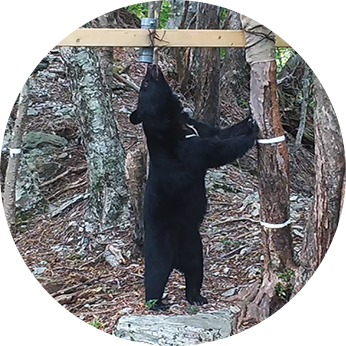
-
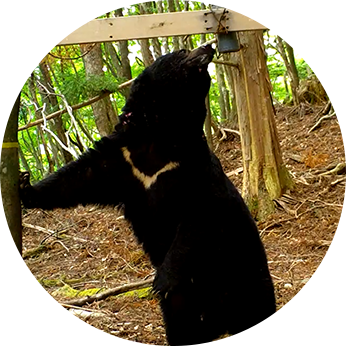
Gonta Estimated to be 24 years old. Male. He is the oldest individual confirmed in Shikoku. Also, from blood relationship analysis, it is known that he is the father of many individuals. He is a "Big Daddy" of sorts.
-
Mizuki Estimated to be 21-22 years old. Female. The oldest female confirmed in Shikoku. She is characterized by her large tsukinowa. It is known that she had a child with Gonta in the past.
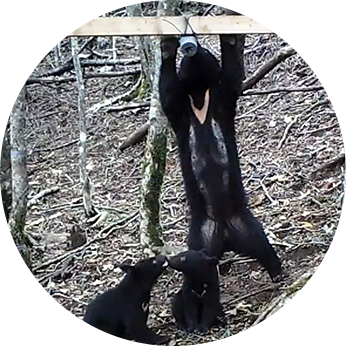


You can donate by credit card.
Sorry but supporter gift is only for resident in Japan.





